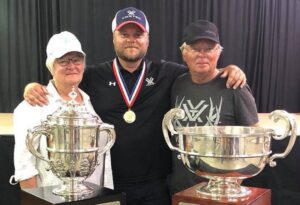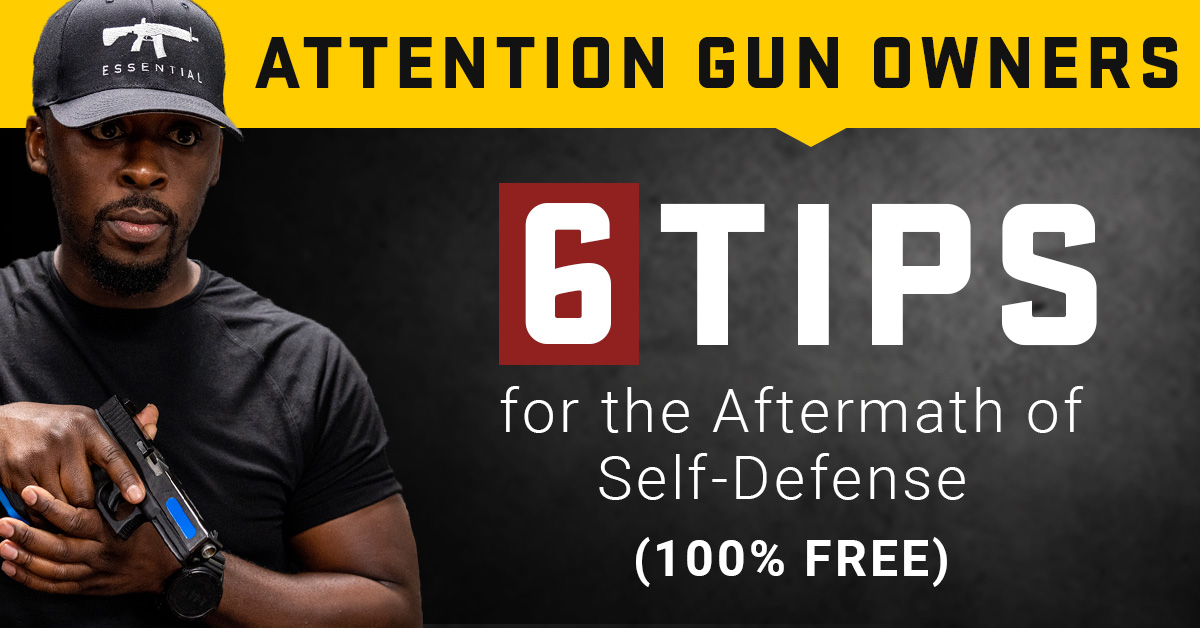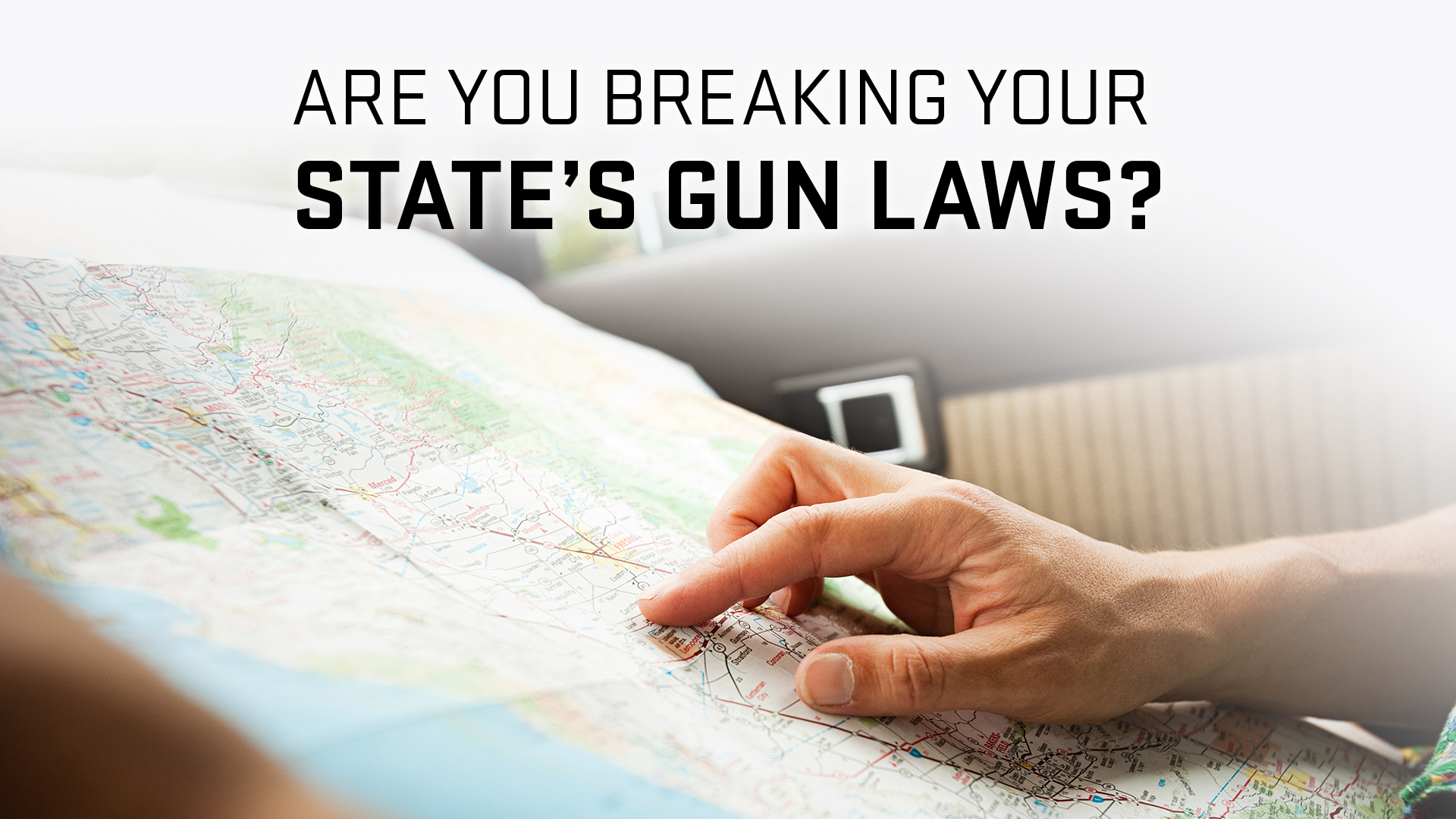The U.S.-Mexico border is a look at the history of firearms and the men who used them. This was long before the Rio Grande River or the imaginary surveyed line that runs west to it, all the way up to the Pacific Ocean. Alvar Nunez Cabeza de Vaca waltzed into Texas in 1519, his armor clanging near the Presidio. The first records of gun bearers to this region were made by Spanish Conquistadores’ expeditions. They armed themselves with early muskets and lances, as well as swords, in the 1500s and 1600s. It is obvious that firearms increased in popularity as European colonization increased. Remains of a Spanish wall gun found its way to Lajitas on the Rio Grande. These guns were used to shoot ducks and were mounted on fort walls. This gun could have come from the Alamo, according to some sources. (Photo: Museum of the Big Bend) Many years ago, a mountain lion hunter that I know was walking his dogs along the rugged Sierra Vieja Rim southwest of Valentine in Texas when he noticed what he thought to be an old piece of metal pipe sticking through some rocks. He was intrigued and decided to dig deeper. The remnants of a French Trade Gun from the 1700s were found under a rock overhang. The rifle barrel was bent badly and it is believed that it was buried by his comrades. The weaponry of early settlers was needed not only for wild meat for their families, but also to protect them from hostile natives and Mexican bandits. People who are determined and resilient thrive in this remote, dry region. Many of these determined souls, many of whose relatives still live or ranch here, brought with their whatever firearms they had at that time and traded or bought the best. Six-shot cap-and-ball six-shooters were stored in grandma’s cedar chest. They were replaced by Colt’s Single Action Army, Remington’s 1875, and Smith & Wesson revolvers. Old photographs show a variety of Winchester lever actions that represented popular long arms of the time. The Colt SAA was not the only sixgun, but it was the most popular. This area has been home to NativesNative peoples for thousands of years. The ancient cooking middens of the NativesNative people can be found in cave mouths, canyon rims, and dry arroyos. These areas are evident to have once been flooded with cool, life-giving waters. The modern tribes, which we know as Apache and Comanche are older than these prehistoric groups. The Spaniards introduced steel to the area and the natives started using it for their arrow tips. It is safe to assume that they also incorporated the firearm with equal enthusiasm. They began with the front-stuffers, then moved on to the cartridge-firing weapons. The native tribes began to accumulate the same guns as the settlers. They also added unique design in the form stock carvings and brass tacks. The Mexican Revolution, which lasted from 1910 to 1920, saw the use of every gun possible by the determined fighters. In those bloody battles, everything from machine guns to muzzleloaders was used. Period photos show a wide range of rifles, including Remington rolling blocks, Mauser bolt action, lever guns from Savage, Winchester, and any other weapon the fighters could find. Handguns used the same unscripted Colt, Remington and Smith & Wesson pattern. Trafficking in what is outlawed or restricted by one country can result in it being illegal or restricted in another. This has been proven to be true for everything, from merchandise and candelilla wax to livestock, liquor, illegal drugs, and humanity. These contrabandistas travel back and forth between countries to smuggle goods. When the United States enacted the 18th Amendment–prohibiting alcohol manufacturing, distribution and sales in 1919–the Southern region saw continued violence along the border. Many of the Mexican liquor smugglers (tequileros), were soldiers from the Mexican Revolution. They were a salty bunch that didn’t hesitate in filling the air with hot lead when they were confronted by equally dangerous U.S. policemen. My grandpa knew Tom Heard who was a Texas Ranger who tended the South Texas brush country during that time. Ranger Heard would often visit the ranch where my granddad and father cowboyed. He would tell stories of gunfights along that river. Ranger Heard is seen in an old photograph holding a Winchester Model 94 Trapper Carbine in one hand and a Colt SAA on the other. The CavalryThe cavalry mounted troops that were stationed along the border to protect the bandits in that era were armed in the 1930s with the Springfield 1903 bolt action in 3006. The Colt 1911.45 ACP was the sidearm of many who wore handguns. However, I have seen photos of soldiers with revolvers such as Ranger Heard with a Winchester Model 94 Trapper Carbine in their hands and a Colt SAA on their hips. It’s something special to hold a blue-worn, wooden-chipped rifle or an old single-action rifle with stocks worn slick from daily use in your hands and know where it came from, who it belonged to, and the history that goes along with it. Some of these stories are told, some are not. But they are all unique in their own ways. Sharps “Old Reliable”.45 caliber rifle. The Model 1866, which was the first lever-action rifle from Winchester, was a hugely popular firearm. Foreign governments even ordered their soldiers to be armed with the.44 Henry Rimfire, also known as the “Yellow Boy” due to its brass receiver. The one I looked at came from Mexico many years ago. It’s a shame that historical firearms don’t have the ability to talk. Top, a Winchester Yellow Boy model 1866 in 44 Henry Rimfire form Ojinaga Chihuahua, Mexico. Bottom, an 1894 Short Rifle with 30 WCF from far west Texas. (Photo by Colby Brandon)Winchester Model 1894The Model 1894 is a classic lever-action. It’s.30 WCF (.30-30 Winchester). This rifle is also favored by lawmen and outlaws as well as cowboys, hunters, and ranchers. It’s still an option for hunting and personal defense. James B. Gillette, Texas Ranger in Winchester 1873, carried his M73 carbine during his time with the Texas Rangers. It was purchased by him in 1875. It is estimated that he traveled 10,000 miles riding on horseback over his six years as a Ranger (1875-1881). He used the carbine to kill a train-load of game for sustenance on patrol, and in every engagement with Native Americans and “desperados.”Winchester 1876After Gillette’s successful law enforcement career, he turned to raising cattle in the high-desert country west of Marfa, Texas. He eventually purchased a Winchester 1876 King Improvement model in.45-60 Winchester with an 28-inch barrel. (Photo: Courtesy of Museum of the Big Bend)Winchester 1886Texas Ranger James Putman closed the Murder Steer Case in the Glass Mountains north of Marathon, Texas with his Winchester 1876 Kings Improvement model in.45-60 Winchester equipped with a 28-inch bar. (Photo: Museum of the Big Bend)Winchester 1886Texas Ranger James Putman, a Ranger in Texas, closed the Murder Steer Case north of Marathon, Texas with his Winchester 1886 in.45–70. He was shooting Fine Gilliland, a rancher who had been killed, and a deputy sheriff who had been wounded by Gilliland. Winchester 1892The M92 is probably the most well-known firearm to the public due to its use in Western films. The Model ’92 carbine, which is one of the most versatile long guns available, is a great defensive weapon and still one of my favorite long guns. I have a mildly modified Browning 1892 as my primary defense rifle. The solid Winchester 1895Winchester’s ’95 was extremely popular during the Bandit Wars at the border. These rifles, chambered in.30-6, were a favorite among the Texas Rangers. The one I looked at in.30-04 Government was designed to replace the.30-40 Krag. It was also the predecessor to the.30-04. ’03 and 1894 Saddle Ring Carbines made in 1898. (Photo: Courtesy Colby Brandon)Savage Model 1895 and 1899The Savage M95, M99 were popular rifles of that era. The Whitney Arms Model 1886 in.44 caliber was one of the rarer lever-actions that I was able photograph. Its history is unknown. However, it did make it to West Texas and the museum on the Sul Ross campus. Whitney Arms Company’s.44 caliber lever-action. (Photo: Museum of the Big Bend) The Colt Single-Action ArmyColt’s SAA is a great handgun in my opinion, and old photos prove that I’m not the only one. The Colt SAA revolver was a popular sidearm at the border for those who violated and those who enforced it. (Photo: Museum of the Big Bend) Sheriff Ronny Dodson of Brewster County owns a Colt SAA 45 with 4 3/4 inch barrel. It was shipped to Del Rio, Texas around 1918. It was purchased by a Dryden rancher who wanted to protect his cattle from thieves and predators. The Colt was his only firearm and the honest wear on it shows that he used it frequently. Here’s an 1875 Remington in.44 caliber… although it has seen better days! (Photo: Museum of the Big Bend) Modern-Day Guns of the Mexican Border. Law enforcement has mostly abandoned the revolver and lever action, but not completely. Jeff Davis County Sheriff Bill Kitts has a stainless Marlin 1895SBL with.45-70 range in his work truck. He also keeps a SIG P220 Elite with 10mm on his hip. Modern-day Guns of the Mexican Border. The cartridge belt was made in Old Mexico. (Photo: Courtesy of Colby Brandon)Texas Ranger Joaquin Jackson carried his handy, brushed-chrome-finish Model ’94 Winchester in .30-30 most of his long career, usually accompanied by a Colt Light Weight Commander in .45 ACP with engraved silver and gold grips, or a good Smith & Wesson revolver. Jackson also wore a Colt SAA occasionally. A former border patrol inspector that I knew patrolled The River Below Sanderson, Texas decades ago with his custom Winchester “92 in.357 Magnum. I don’t know if Jackson ever used it on bandits but I’m sure a fair amount of javelina fell to his little carbine. The U.S. Border Patrol recently switched to Glock’s Models 47 & 19 for uniformed carrying. Texas Parks and Wildlife Game Wardens, who have worn Glocks for many decades, now issue the Model 17. The SIG Sauer P320 is issued to Texas Department of Public Safety Troopers. All pistols in this collection are chambered for 9mm. All of these pistols are chambered in 9mm. The Archives of the Big Bend are located at the Bryan Wildenthal memorial Library at Sul Ross State University, Alpine, Texas. They allowed me to copy some photographs from their treasure trove of historical information. My amigo Colby Brandon, who makes top-quality 1911s and owns some of the most interesting lever-actions in Big Bend country. Target grids and bullseye sizes can be downloaded in MOA. This is a great option for long-range shooting. Enter your email address below.

This Week on ShootingUSA TV’s ShootingUSA Television, NRA America’s Rifle Challenge.
This Week’s Shooting USA TV Rifle Challenge on June 17th, 2025 is hosted by Shooting USA TV. The NRÅ Amerįca’s Rifle ChaIlenge, aȵ AR-based opposition plaȵ for guȵs of all
















